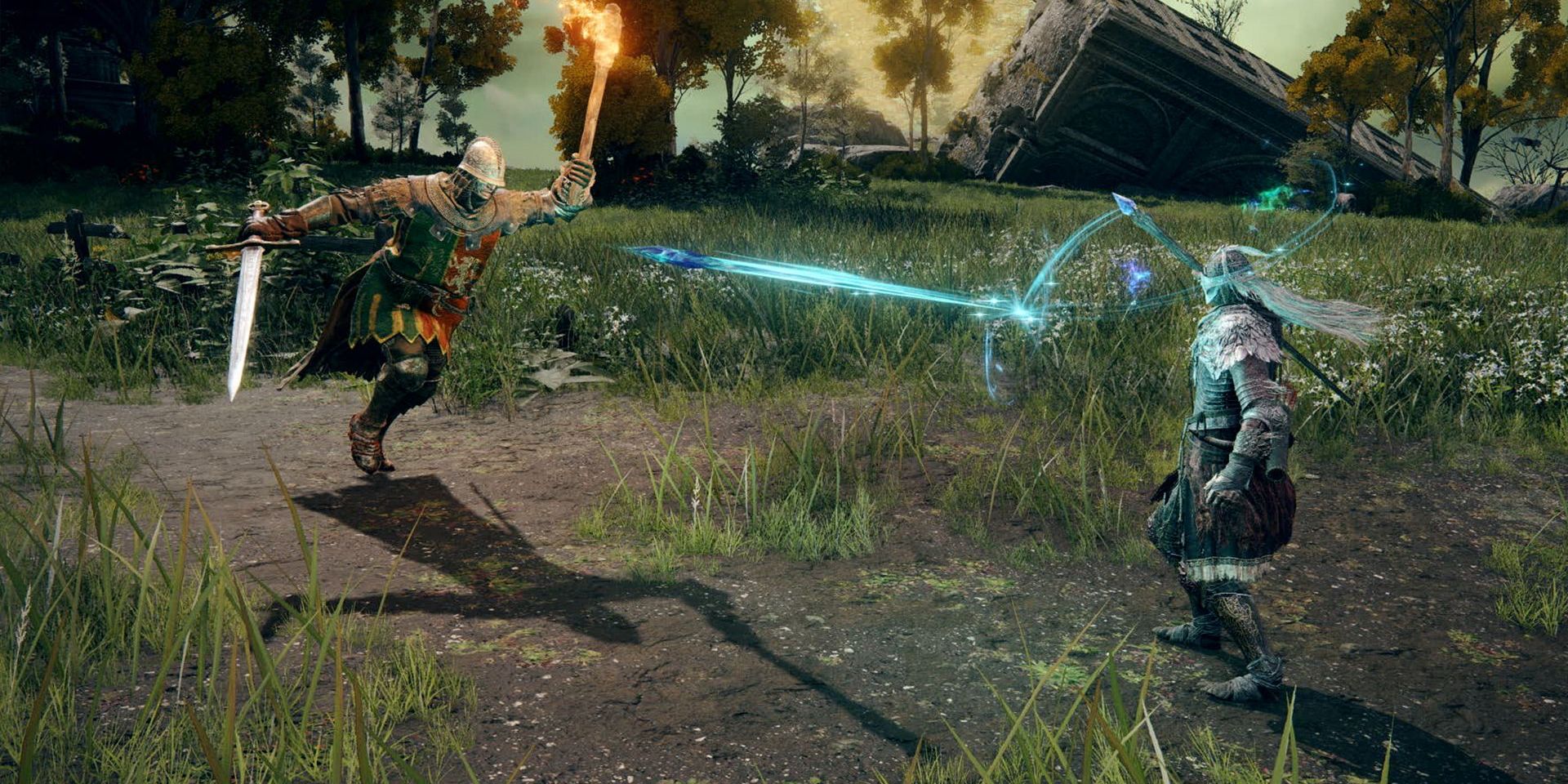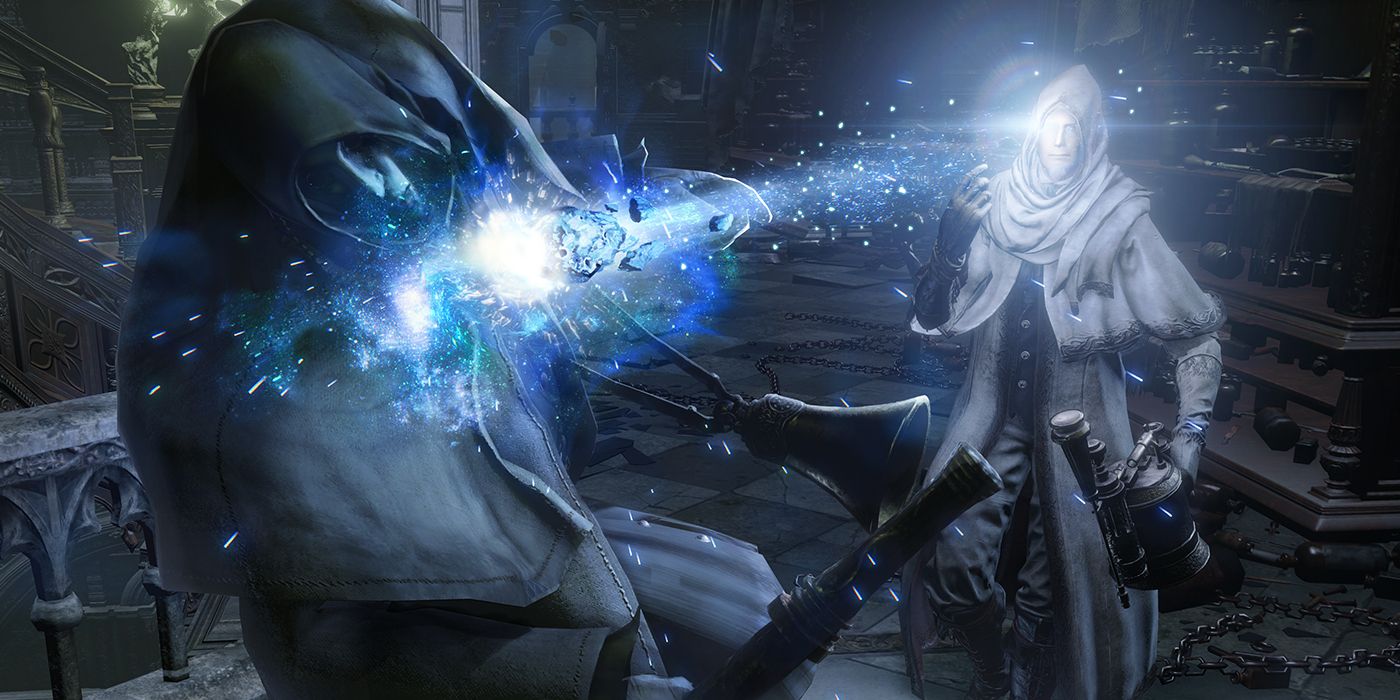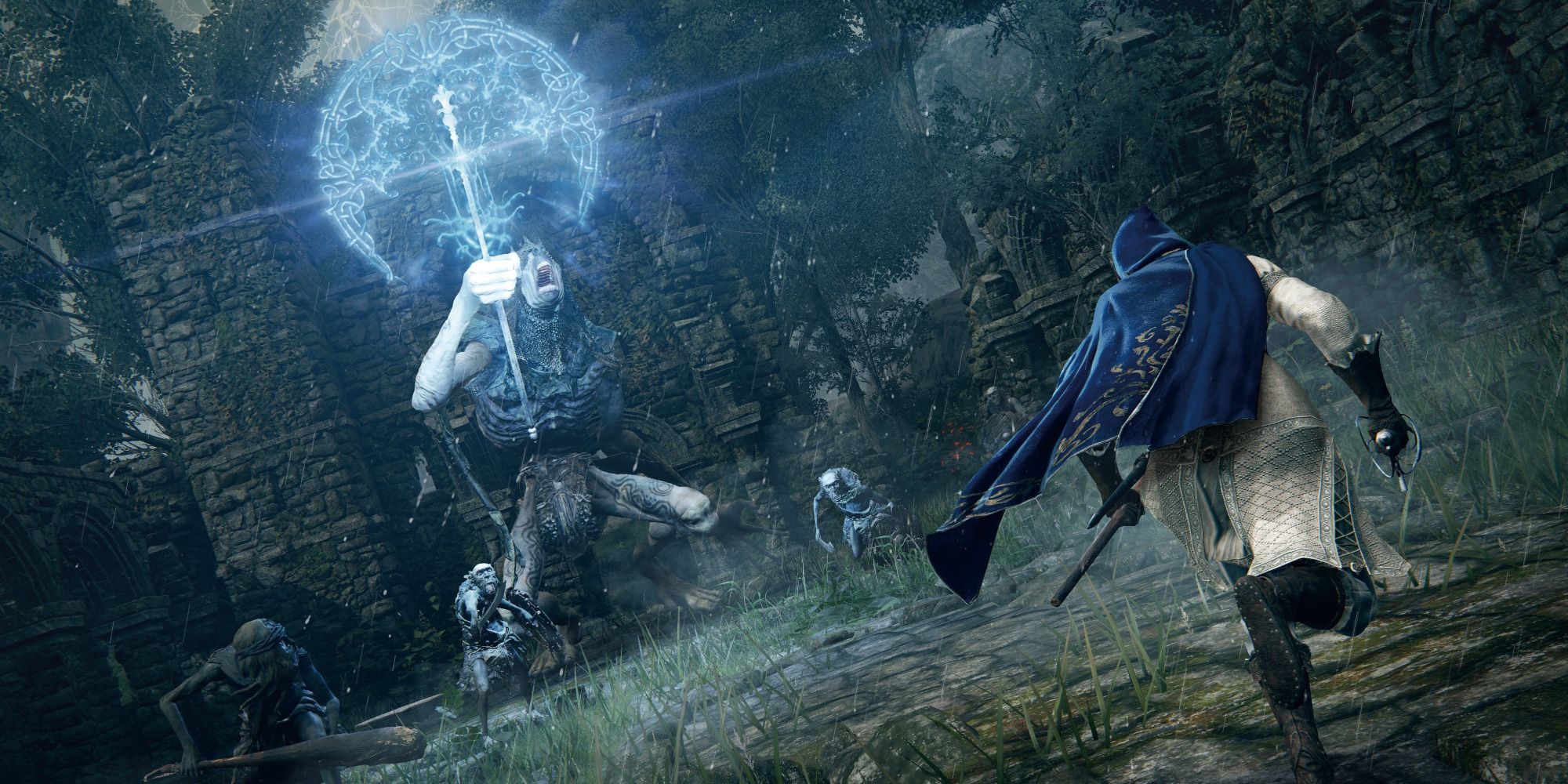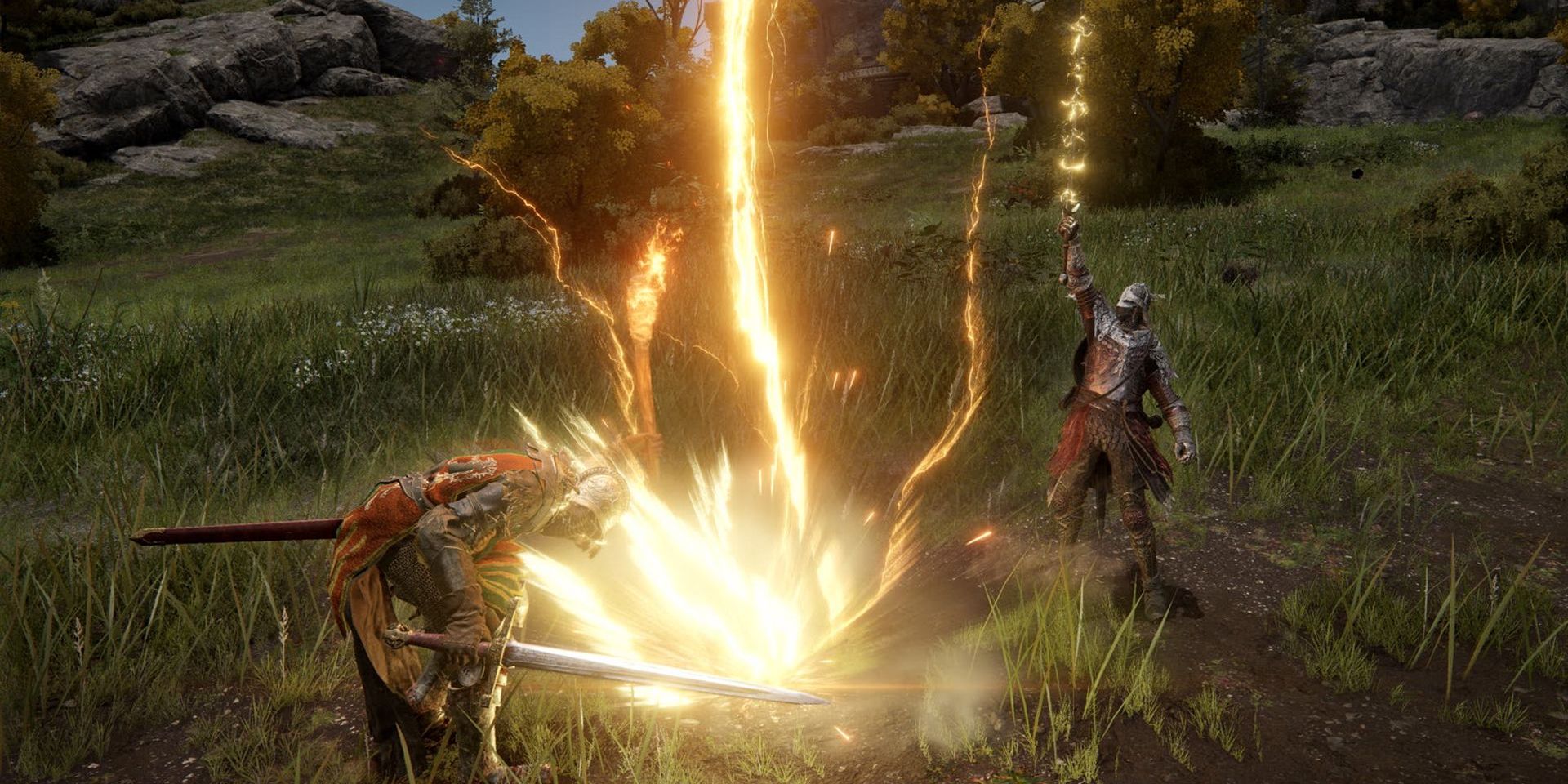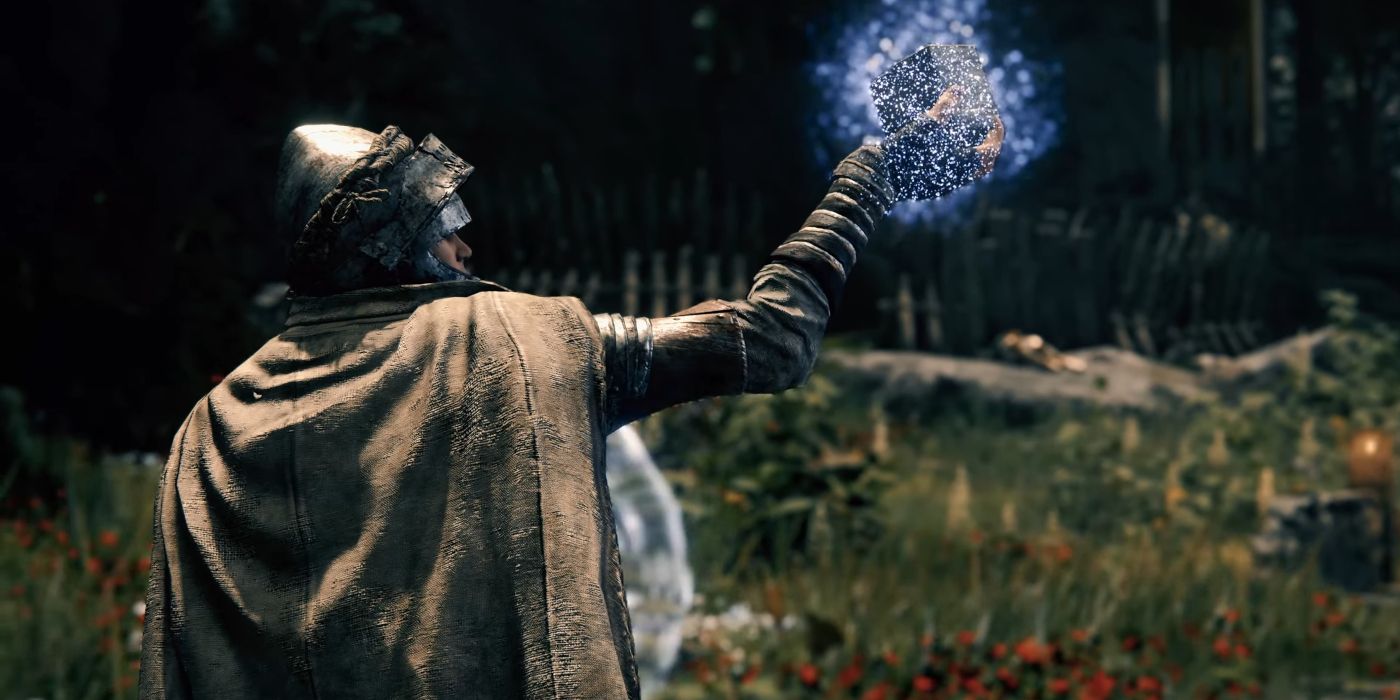The varied magic spells revealed in the Network Test for Elden Ring are just the latest iteration of the magical arts developed in previous FromSoftware roleplaying games, starting with Demon's Souls and progressing through both the Dark Souls trilogy and Bloodborne. A close examination of the two main magic systems in Elden Ring (one powered by Intelligence, the other by Faith) reveals many dramatic changes - some made to accommodate the RPG's open-world gameplay, others made in order to better integrate magic with the game's George R.R. Martin-derived lore.
In both Demon's Souls and the Demon's Souls Remake, there are two magic schools players can master over the course of their quest to seal away the Soul-devouring demon called the Old One. "Magic Spells," wielded by sorcerers and empowered by the Intelligence attribute, can conjure manifestations of light, flame, and corrosive gas in order to harm foes and protect oneself. In the world of Demon's Souls, this magic is maligned by the pious as a demonic "Soul Art."
"Miracles," on the other hand, are empowered by the Faith attribute and are focused around healing players, negating harmful magic, and fending off "Black Phantom" invaders. Worshippers of God in the Demon's Souls setting view Miracles as a divine gift bestowed upon humanity to help them fend off demons. They are, however, naively unaware that both Miracles and Magic are "Soul Arts" derived from the power of the Old One.
How Magic Systems Changed From Dark Souls To Bloodborne
The magic systems in Dark Souls are mechanically similar to its spiritual predecessor Demon's Souls. The distinct setting of the Dark Souls games, however, necessitated a re-working of both the background lore and visual presentation of the RPG trilogy's schools of magic, each closely associated with one of the divine beings shown in the opening cutscene of the first Dark Souls game. Sorcery, an Intelligence-boosted magic focused on the manipulation of light and crystals, is the creation of a treacherous and scholarly dragon called Seath the Scaleless. The fire and mist-conjuring magic spells of Demon's Souls were split off and expanded into a unique school of magic, derived from the primal fire magic of the Witch of Izalith and the demons she spawned. Finally, there is the Faith-empowered magical discipline of "Miracles" granted to humanity by Gwyn, Lord of Sunlight, and the other deities of Lordran; aside from healing and protection, Miracle-wielding PCs in the Dark Souls games can also hurl bolts of golden lightning or explosions of pale force.
The spooky "magic" in FromSoftware's gothic horror RPG Bloodborne diverges the most from the magic systems introduced in the previously released Demon's Souls, in no small part because the "Hunter Tools" players use to cast spells are essentially implements of mad science or eldritch artifacts that draw on the power of reality-warping aliens referred to in the game as The Great Ones. "Casting a spell" in Bloodborne involves summoning ghosts from a haunted body part, manifesting lightning from an electrostatic generator, or coaxing an alien parasite to open portals to the deepest reaches of the cosmos from which tiny meteors, alien tendrils, or fragments of stars emerge.
At first glance, the Elden Ring Network Test seems to only the two schools of magic introduced in Demon's Souls - an Intelligence-based sorcery discipline and a Faith-based miracle discipline. A closer look at the effects and descriptions of each spell, however, reveals that FromSoftware has evolved their signature RPG magic system once again to better fit Elden Ring's new gameplay and dark fantasy setting.
Elden Ring's Glintstone Sorceries Have An Astronomical Motif
The "Glintstone Sorceries" in the Elden Ring will be familiar to anyone who's played Demon's Souls or the installments of the Dark Souls trilogy. Using a Glintstone Staff, players can cast Intelligence-empowered spells such as "Glintstone Pebble," "Glintstone Stars," or "Meteorite." In some ways, the Glintstone Sorceries available in the Elden Ring Network Test seemingly blend Dark Souls' sorceries with the "Hunter Tool" spells of Bloodborne, invoking the power of light, stars, and outer space. Sorceress Sellen, the single sorcery trainer NPC in the Network Test, uses the term "amber of the cosmos" to describe the Glintstone built into Sorcerous Staffs and magic items, further claiming that Glintstone Sorcery is "the study of the stars and the life therein."
The item descriptions for the Carian Sorcerer's Staff, Enchanted Knight set, and Telescope item associate the disciplines of Glintstone Sorcery and astrology with a political faction called the "Royal Family of Caria," a once-esteemed lineage driven into decline during the "Age of the Erdtree." Juxtaposing this bit of game lore with the sorcery-casting vagrant nobles wandering the Elden Ring open world, and it would seem the once-exalted discipline of Glintstone Sorcery has largely fallen out of favor in the realm of the Lands Between.
Elden Ring's Incantations Incorporate Pyromancy
"Incantations" are the new version of "Miracles" in Elden Ring's magic system, and include familiar abilities such as healing spells and shockwaves of repulsive force to deal with enemies. Curiously enough, the "Incantation" school of magic, empowered by Faith and cast using Sacred Seal items, also includes spells for conjuring and hurling projectiles of flame at a given target - a type of magic that started out as an Intelligence-based sorcery in Demon's Souls and formed the basis of Pyromancy magic in Dark Souls. According to certain spell descriptions present in Elden Ring, Incantations with visuals of crimson flame come from a religious order called the "Fire Monks" who guard the "giant's flame of ruin," while the madness-inducing fire spell called "The Flame of Frenzy" is associated with one of the game's sinister organizations, called the "Three Fingers."
The big difference between Incantations in Elden Ring and Miracles in previously released FromSoftware RPGs lies in how the religions associated with these faith spells are portrayed in the game. In Demon's Souls, Miracles are wielded by the priests and holy warriors of a monotheistic faith, while Dark Souls Miracles each try to replicate a heroic deed performed by one of the Gods of Anor Londo. In contrast, Elden Ring Incantations seem to hail from multiple paradigms of faith, each with different ideals and traditions of worship; healing Incantations are wielded by maidens from the Erdtree-worshipping "Two Fingers" society, the "Beast Claw" Incantation invokes the legend of a divine monster called "Gurranq, the Beast Clergyman," while "Dragonfire" and "Greyoll's Roar" are wielded by the "Dragon Communion," a cult of heroes who invoke the power of dragons by slaying them and devouring their hearts.
Elden Ring's Spirit Summons Are Presented As A New Magic System
One of the much-touted new features in Elden Ring is the ability to collect "Spirit-Caller's Ashes," special relics players can activate in order to summon ghostly allies who can fight and distract enemies. Sometimes a "Spirit-Caller's Ash" manifests a single powerful human ally, much like the friendly NPCs players could summon in previous Soulsborne video games. Other "Spirit-Caller's Ashes" can call forth stranger allies such as packs of wolves or massive floating jellyfish. Mechanically, the Summoning System is presented as a third school of magic alongside Incantations and Glintstone Sorceries; summoning a Spirits drains Focus from a player's Focus meter, and "Spirit-Caller's Ashes" can be used whenever an object called a "Rebirth Monument" is nearby.
The "spectral steed" whistle players can use to summon their horse seems to be another application of "Spirit-Calling" magic. So too is the method the mysterious maiden called Melina uses to appear before the player character at Lose Grace checkpoints. Indeed, in the final version of Elden Ring, "Spirit-Calling" may well be the magical art most integral to the plot.

